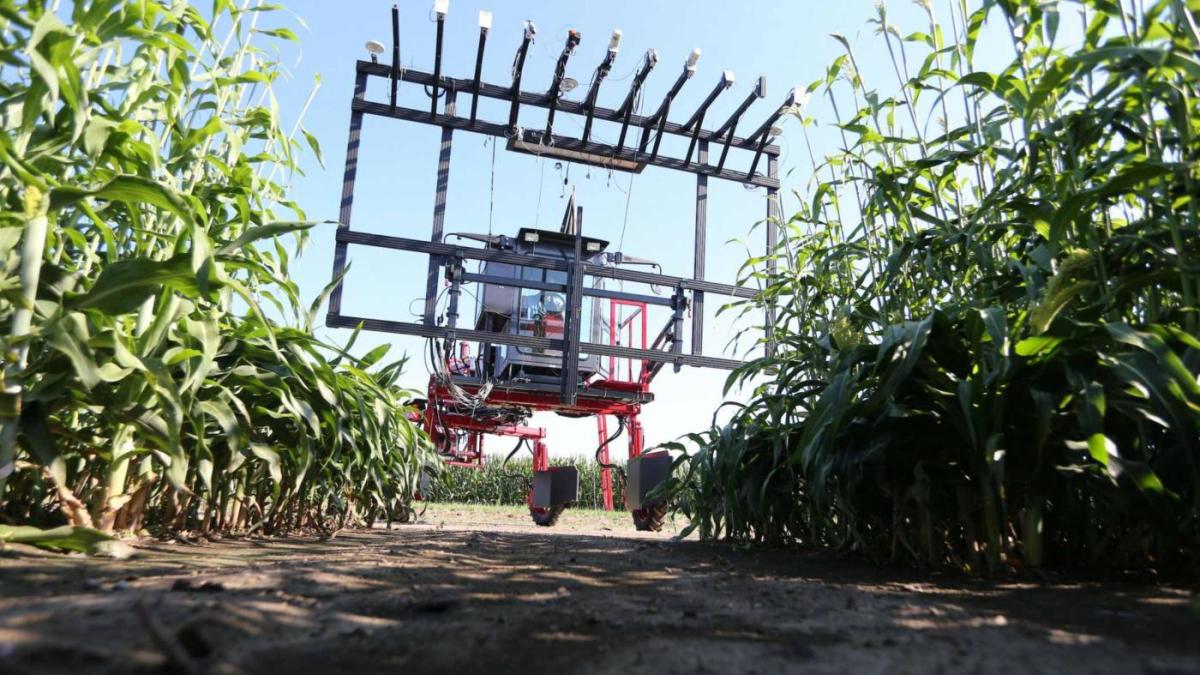Intelligent IoT Powers Purdue’s Digital Agriculture Initiative for Food Security Worldwide

Real-time field data automation effort works to produce food, fuel and fiber more effectively than ever before
With the global population estimated to top 9 billion people by 2050, researchers estimate agricultural output must double to meet the impending demands.
A comprehensive, coordinated effort to address this challenge was recently announced by an Association of Public and Land-grant Universities (APLU) national commission, which included three Purdue University leaders. The commission also highlighted the importance of establishing various transdisciplinary efforts, such as the one being forged between Hewlett Packard Enterprise and Purdue University, home to one of the world’s leading Colleges of Agriculture.
To produce food, fuel and fiber more effectively than ever before, Purdue is partnering with HPE to blend research, innovations and disruptive technologies like the Internet of Things (IoT) to revolutionize farming research with digital agriculture.
How can digital agriculture make this difference? Imagine, instead of manually measuring and inputting data on the moisture characteristics for 45,000 samples of corn, IoT sensors can measure numerous characteristics in real-time, while the plants are still in the field, making it possible to make changes that have immediate impact.[1]
“Purdue is the test bed for digital agriculture IoT to enhance discovery and economic development,” says Karen Plaut, Ph.D., Interim Dean of the Purdue University College of Agriculture. “We’re working to transform agriculture in America and globally.”
Terabytes of Data Every Day
Based at Purdue’s Agronomy Center for Research and Education (ACRE) field research station, digital agriculture projects collectively capture terabytes of data daily by using multiple types of sensors, cameras and human inputs. To gather, aggregate, process and transmit such volumes of data back to Purdue’s HPE supercomputer, the university is leveraging a combination of wireless and edge computing technologies from HPE and Aruba, a Hewlett Packard Enterprise company.
It starts with rugged outdoor Aruba 270 series access points and Aruba 7000 Series Mobility Controllers to supply fast and secure communication and data transmissions. For Wi-Fi visibility and optimization, Purdue utilizes AirWave for streamlined management and troubleshooting, which helps ensure resources stay focused on ag research rather than network administration.
HPE Edgeline IoT Systems provide secure, perpetual connectivity with the deep learning analytics capabilities necessary to accelerate and scale Purdue’s research findings, as well as deliver agriculture breakthroughs at production capacity.
Expanding on the corn example, a typical investigation for one type of corn, such as a popcorn variety, could account for 10 different characteristics. This means data from 450,000 samples for a single group of researchers studying a single type of corn variety must be acquired and analyzed.[2]
Multiply this by thousands of research projects addressing issues of food scarcity, safety, traceability, security and sustainable agriculture worldwide and it’s easy to see the impact of automating data collection and analysis with HPE and Aruba solutions.
PhenoRover: An Innovative Mobile IoT Platform
Using Aruba and HPE solutions, researchers obtain and process data in the field, communicate it to world-class laboratory facilities at ACRE and send it to the main Purdue data center using a 10Gbps fiber connection – for a data transmission rate that is 1,000 times faster than the average internet connection in the U.S.
AgTech innovations arising from the partnership thus far include solar-powered mobile Wi-Fi hotspots – providing researchers with high-performance access wherever it’s needed on the 1408-acre research farm. Now, instead of taking paper and pencil into a field, writing down measurements, driving them back to a building and keying them into a desktop computer, researchers can simply punch data into a mobile device on-site and it’s instantly transferred to the appropriate analytics application in Purdue’s supercomputer.
Other innovations include high-speed weather tower connectivity for farm-scale wireless IoT and a breakthrough PhenoRover, which is a semi-automated mobile IoT sensor platform to measure variations in crop performance. In addition, sufficient wireless backhaul was engineered to deliver outdoor wireless coverage throughout the entire property.
These technologies will replace a host of manual processes, enabling researchers to focus on productive work. For example, IoT-enabled sensors measure atmospheric gasses and transmit the information back to the supercomputer using Wi-Fi, decidedly accelerating access to analysis and actionable insights.
Real-Time Drone Images and More
Moving forward, the eight academic departments cooperating in ACRE research activities will continue working with HPE and Aruba to refine the technology solutions. In addition, the digital agriculture test bed intends to bring AgTech innovations to market for commercial use.
Purdue researchers are also building and experimenting with Unmanned Aerial Systems (UAS), often called drones, to advance the effectiveness of plant growth data collection. Currently, drone images are downloaded and then distributed to internal constituencies to study biological relevance. In the future, the drone cameras could transmit real-time images via the HPE Aruba infrastructure for growers to make sound, science-based decisions.
“When thinking about developing the next mobile app or visualization tool, the ideas are endless,” says Dharmendra Saraswat, Ph.D., Associate Professor of Agricultural and Biological Engineering at the Purdue University College of Agriculture. “To deliver a reliable and useful tool to breeders and growers, we must master new things and determine what is useful in a production environment.”
Working with HPE and Aruba, Purdue researchers will continue developing digital agriculture solutions that accelerate research and, ultimately, transform farming to improve food supplies worldwide.
So what next?
If there’s one word to sum up the broad effects of digital agriculture it’s disruption. Advances will drive innovations beyond improvements in production yields and quality at the farm level. The results of data gathering and analysis efforts will spread throughout other industries, improving operating models and changing lives for the better.
And that’s just the beginning. As more data becomes available, consumers will demand access to digitized food component footprints that will help them far beyond the relatively simplistic label presentations of today. Further, using self-learning algorithms, a person’s health profile can be monitored throughout their lifetime with automatic delivery of information regarding safe food items – along with where and how to get them.
Personalized healthcare, improved food component data and safe item recommendations will cause corresponding shifts in purchasing habits that will disrupt other industries, such as retail grocery. For instance, combining the current trend toward online grocery shopping with granular data and analytics capabilities will result new consumer expectations for shopping sites to correlate food items with a person’s health profile before they buy.
Digital agriculture isn’t just key to getting deep data sets to use on the farm. It’s a strategic game changer with the potential to improve the health and well-being of every individual on the planet.
Read the full release here: Purdue University’s Digital Agriculture Initiative Advances Farming and Food Production with HPE Aruba Solutions
[1] “New building proves that Ag isn’t just for farmers,” June 24, 2016.
https://ag.purdue.edu/plantsciences/new-building-proves-that-ag-isnt-just-for-farmers/
[2] Ibid

